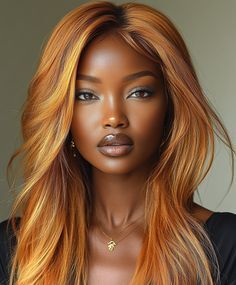Weaving hair is one of the hair extension services that can affect your hair if installed or removed carelessly; however, it can be a protective style that promotes hair growth if done correctly.

One of the primary causes of damage from weaves is excessive tension on the scalp and natural hair. Tight braiding or incorrect stitching of the weave can lead to traction alopecia, a condition where hair is pushed out from the roots, causing thinning and hair loss over time.
Neglecting the natural hair underneath the weave hair presents an issue. That is because the major parts of the hair are covered, and most people forget to wash, moisturize, or care for their scalp in regard to dryness, breakage, or even dandruff. Poor scalp hygiene can cause infections or irritation in people.
The type of weave installation also matters. Sew-in weaves are less damaging compared to glue-in or tape-in extensions, which can weaken hair when removed improperly. Using harsh adhesives or leaving extensions in for too long may lead to breakage and hair thinning.
Heat styling and other excessive use of chemicals on the weave may damage not only the hair extensions but the natural hair also. Heat weakens hair, making it easier to break easily.
Avoid keeping weaves in for too long, ideally no more than 6–8 weeks, and take breaks between installations to allow natural hair to breathe. Moisturizing the scalp and natural hair regularly, using lightweight oils, and washing the hair with a gentle shampoo can also help maintain hair health.
While weave hair can cause damage if not properly maintained, following best practices can make it a safe and effective protective style.
 One of the primary causes of damage from weaves is excessive tension on the scalp and natural hair. Tight braiding or incorrect stitching of the weave can lead to traction alopecia, a condition where hair is pushed out from the roots, causing thinning and hair loss over time.Neglecting the natural hair underneath the weave hair presents an issue. That is because the major parts of the hair are covered, and most people forget to wash, moisturize, or care for their scalp in regard to dryness, breakage, or even dandruff. Poor scalp hygiene can cause infections or irritation in people.The type of weave installation also matters. Sew-in weaves are less damaging compared to glue-in or tape-in extensions, which can weaken hair when removed improperly. Using harsh adhesives or leaving extensions in for too long may lead to breakage and hair thinning.Heat styling and other excessive use of chemicals on the weave may damage not only the hair extensions but the natural hair also. Heat weakens hair, making it easier to break easily.Avoid keeping weaves in for too long, ideally no more than 6–8 weeks, and take breaks between installations to allow natural hair to breathe. Moisturizing the scalp and natural hair regularly, using lightweight oils, and washing the hair with a gentle shampoo can also help maintain hair health.While weave hair can cause damage if not properly maintained, following best practices can make it a safe and effective protective style.
One of the primary causes of damage from weaves is excessive tension on the scalp and natural hair. Tight braiding or incorrect stitching of the weave can lead to traction alopecia, a condition where hair is pushed out from the roots, causing thinning and hair loss over time.Neglecting the natural hair underneath the weave hair presents an issue. That is because the major parts of the hair are covered, and most people forget to wash, moisturize, or care for their scalp in regard to dryness, breakage, or even dandruff. Poor scalp hygiene can cause infections or irritation in people.The type of weave installation also matters. Sew-in weaves are less damaging compared to glue-in or tape-in extensions, which can weaken hair when removed improperly. Using harsh adhesives or leaving extensions in for too long may lead to breakage and hair thinning.Heat styling and other excessive use of chemicals on the weave may damage not only the hair extensions but the natural hair also. Heat weakens hair, making it easier to break easily.Avoid keeping weaves in for too long, ideally no more than 6–8 weeks, and take breaks between installations to allow natural hair to breathe. Moisturizing the scalp and natural hair regularly, using lightweight oils, and washing the hair with a gentle shampoo can also help maintain hair health.While weave hair can cause damage if not properly maintained, following best practices can make it a safe and effective protective style.






